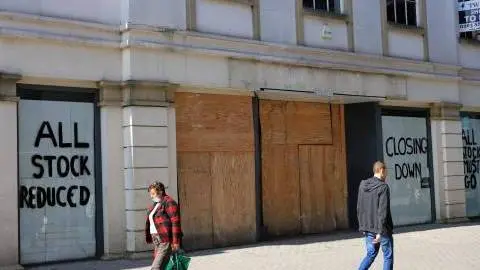Austria: When it rains it pours
Austria had just left its Covid winter and political troubles behind when the start of the war in Ukraine brought new difficulties. A rebound in tourism could prevent a recession over the summer, if it weren't for labour shortages
A deteriorating outlook
Slightly surpassing its pre-pandemic level, the Austrian economy grew by 1.5% quarter-on-quarter in the first three months of 2022. Industry, construction, and trade contributed to growth in the first three months of the year, but hospitality and accommodation also gained some tailwinds on the back of relaxed Covid containment measures and the return of skiing tourists.
With the start of the war in Ukraine, the economic outlook has deteriorated sharply. As one of the eurozone countries most dependent on Russian gas, Austria is clearly feeling the effects. The small industrial nation imports around 90% of the gas it needs each year, with only 10% covered by domestic production. Eighty percent of gas imports come from Russia. Of the total gas consumption, industry requires around 40%.
Old and new supply chain frictions are also weighing on industrial activity. Consequently, it is not surprising that the leading indicators for industry do not paint a rosy picture of the future. The PMI for manufacturing most recently stood at 51.2, the lowest level since November 2020, when Austria was hit by its second Covid wave.
And consumers are not optimistic about their economic future either. The assessment of households' financial situation in the coming 12 months, as measured by the OeNB's consumer confidence indicator, was at a record low in June, mainly due to high inflation. Measured by the harmonised consumer price index, inflation stood at 8.7% year-on-year in June. A similarly high value was last reached in 1975 during the oil crisis. To ease the burden on consumers and businesses, the Austrian government launched a relief package in June. Among other things, the package includes financial subsidies and relief for low-income households, the postponement of the introduction of a CO2 tax, originally planned for July, until October, and a one-off payment. Although this should provide some relief for households, government support will not compensate for the loss of purchasing power.
The total volume of all measures amounts to €28bn until 2026, which means that government debt will rise in nominal terms in 2022. However, the government does not expect the debt ratio to deteriorate significantly, as high inflation would lead to higher tax revenues and private consumption would be boosted. In our opinion, this is too naive a view. We expect the debt ratio to continue to decline, but at a slower pace than in 2021. At the end of 2022, it should stand at around 80% of GDP, compared with 82.8% of GDP at the end of 2021.
A desperate search for qualified staff
The seasonally-adjusted unemployment rate (Eurostat) stood at 4.8% in May, which is 0.1 percentage points below the level in May in the pre-pandemic year 2019. However, another problem has spread to the Austrian labour market: there is a shortage of workers in many sectors, and the situation is particularly tense in the tourism industry. More than one in two businesses in the accommodation sector recently complained that a shortage of labour was weighing on activity, according to the latest DG ECFIN’s services survey.
In the food and beverage services sector, almost 50% of companies reported being burdened by a lack of workers, and in the travel agencies, tour operators and reservation services sector, it was almost one in three companies. Wage pressure, stemming from the shortage of labour, as well as the general increase in food and energy prices, is likely to cause sharp price markups in the tourism sector over the year. Since summer holidays are generally already planned at this point in time, it is quite possible that the loss of household purchasing power will not affect demand in the tourism industry until the winter. However, this is the more important season for the Austrian tourism industry.
When it rains in Austria it pours: industry is suffering from high prices and supply bottlenecks, consumers face an unprecedented loss of purchasing power, and the only silver lining on the horizon, tourism, is burdened by a shortage of skilled workers. In the short term, summer tourism could still provide some tailwind, but in the longer term, high energy prices, gas shortages and general price increases will plunge not only tourism but the entire Austrian economy into stagflation – at best.
The Austrian economy in a nutshell (%YoY)
This publication has been prepared by ING solely for information purposes irrespective of a particular user's means, financial situation or investment objectives. The information does not constitute investment recommendation, and nor is it investment, legal or tax advice or an offer or solicitation to purchase or sell any financial instrument. Read more
Download
Download article
12 July 2022
Eurozone Quarterly: This is going to hurt This bundle contains 11 Articles